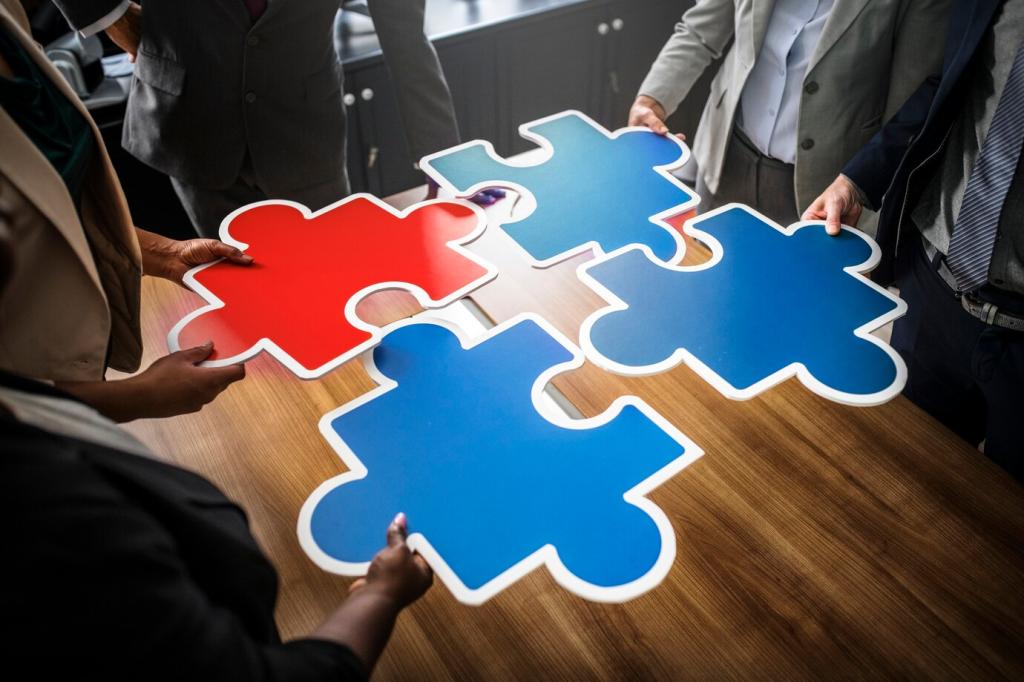Strategies for Effective Team Communication
Chosen theme: Strategies for Effective Team Communication. Welcome to a practical, human-centered guide for creating teams that speak honestly, listen generously, and deliver together. Dive in, try an idea today, and subscribe to keep your communication skills sharp.

Use live conversations for urgent alignment and emotional topics that need tone. Use docs or recorded updates for complex ideas that benefit from rereads. Mixing both—discussion plus a summary note—captures nuance while respecting people’s focus time.

Run Meetings People Don’t Dread
Start every invite with purpose, desired outcomes, and prep materials. Cancel if outcomes shift. Put the decision template in the agenda. When participants know why they are there, they show up prepared and discussions move decisively toward results.
Run Meetings People Don’t Dread
Use round-robins, silent brainstorming, or chat-first prompts to reduce dominance. Invite perspectives explicitly, especially from impacted roles. Psychological safety becomes visible when the quietest idea changes the plan because the group finally heard what it needed.






Ask for feedback before giving it
Starting with a request signals humility and primes reciprocity. Try, “What should I keep, stop, or start?” When people feel heard first, they absorb suggestions better, and conversations become a mutual design exercise rather than a performance judgment.

Make feedback specific, kind, and actionable
Anchor comments in observable behavior, explain impact, and propose a concrete next experiment. Avoid mind-reading. Specificity lowers defensiveness, kindness preserves dignity, and actionability ensures improvement. Document agreements, then revisit to celebrate progress and adjust plans together.

Close the loop and celebrate improvement
Report back on what changed and what you learned. Recognition completes the feedback cycle and motivates future candor. When progress gets spotlighted, teams develop a growth identity where communication becomes a tool for continuous shared mastery.


Navigate Cultural and Personality Differences
Different cultures and personalities vary in directness, context, and pace. Surface preferences explicitly. Create a team glossary for ambiguous phrases. With shared interpretations, the same sentence becomes collaboration, not conflict, and fewer emails carry unintended sharp edges.
Navigate Cultural and Personality Differences
Draft simple agreements covering interruptions, decision authority, escalation, and conflict resolution. Revisit after stressful moments to refine. Agreements depersonalize friction, turning “you always” accusations into “our practice” improvements that everyone can stand behind with renewed confidence and clarity.
Rituals and Tools That Keep Everyone Aligned
Keep standups under fifteen minutes, focus on blockers and commitments, and push problem-solving to follow-ups. Rotate who starts to avoid hierarchy patterns. Brief, consistent cadence keeps momentum without swallowing the morning or encouraging performative status updates.
Maintain a living project hub with goals, timelines, owners, risks, and decisions. Link from every message. When everyone trusts the same page, debates center on choices, not versions, and onboarding stops feeling like detective work with missing clues.
End the week with shout-outs tied to values: clarity, courage, curiosity, or care. Recognition fuels repeat behavior and makes communication standards visible. People copy what gets celebrated, and culture shifts from slogans to everyday, observable habits worth keeping.

